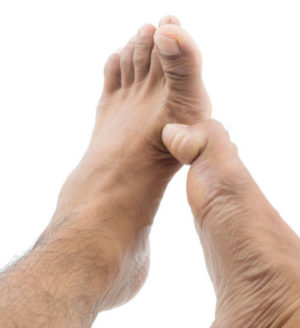 If you’re struggling to bend your big toe, there’s a chance that you’re dealing with a tendon issue. Tendons help us walk and maintain range of motion in our feet, but they can stretch and tear when trauma occurs. It doesn’t even have to be a significant trauma, either. Simply having your toe stepped on or stubbing it against a door frame is enough to cause a tendon to tear. Today, we take a closer look at four ways to identify a torn tendon in your big toe.
If you’re struggling to bend your big toe, there’s a chance that you’re dealing with a tendon issue. Tendons help us walk and maintain range of motion in our feet, but they can stretch and tear when trauma occurs. It doesn’t even have to be a significant trauma, either. Simply having your toe stepped on or stubbing it against a door frame is enough to cause a tendon to tear. Today, we take a closer look at four ways to identify a torn tendon in your big toe.
Symptoms Of a Torn Toe Tendon
Here’s a look at four symptoms that are usually present when a person tears a tendon in their big toe.
1. Pain – Pain is the most obvious symptom because you feel it with each step, and it may even be painful when you’re not putting pressure on it. Pain will be housed in your first metatarsal-phalangeal joint, as well as in your big toe. You’ll also notice pain underneath the big toe when you bear weight on the foot. Keeping pressure off your foot and taking over-the-counter pain relievers are a good way to help limit the pain from a torn toe tendon.
2. Swelling – You may also notice some swelling in the big toe when comparing it side by side to the big toe on your other foot. Swelling can range from mild to severe based on the extent of the tendon damage. Icing and taking anti-inflammatory medications are two great ways to help keep swelling under control.
3. Inhibited Range of Motion – A working tendon helps facilitate range of motion in the toe, so if it is damaged you may not be able to move the toe as easily. Similarly, the above two points can make it difficult or too painful to extend your toe to its normal range of motion. You can try to increase your range of motion by practicing range of motion exercises. For example, try to write the alphabet in the air using your big toe as an imaginary pen.
4. Abnormal Gait – If a torn tendon leads to any of the above symptoms, it will also likely affect your ability to walk as you normally would. Odds are your gait will change as you compensate for the pain or the inhibited range of motion in your toe. Gait changes can overstress other areas of your body, specifically your hips and knees, so if you’re worried about your stride, ask your foot specialist about walking assistance devices like crutches or a boot.